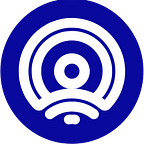CUSTOMER VS AUDIENCE
Hey T-Tribe
Did you miss us? Yesterday was a public holiday but we are back with a banggg!!!
Today we have a personal fav 😍, (Totally fangirling right now), the beautiful, impactful, inspiring 🥁🥁🥁 Blessing Abeng, a branding, and communications expert who helps brands discover their unique identity to tell better stories. She has worked with brands across industries in unique capacities globally, including Seedstars, Facebook, Taeillo, Diageo, Heritage Bank, Dark and Lovely, Bolt, Lemi Ghariokwu, Victor Ehikhamenor, QuickCheck, and more. As the Director of Communications at Ingressive for Good, she supports the nonprofit’s mission to increase the earning power of African youths through tech training and resources. She has trained 5000+ creators and currently nurtures a growing community of over 40,000 individuals curious about branding, community building, and leveraging technology tools for growth.
She shared with us the importance of separating your customers from your audience
Have you ever wondered why only 1% to 10% of your followers buy from you, yet they engage with your content, ask you questions and tell people about you but when it is time to buy, a lot of them disappear?
Is it because they don’t need your service? No.
Here’s the reason.
It is already an established fact that you must have a target market when running a business. We also know that your target market cannot be everybody. Remember, the idea of a target audience or customer doesn’t mean everyone else cannot buy from you. It just means they are not the ideal people. For example, if you have an app as a product and one 80 years old woman buys from you, 90% of your other buyers are 18–25 years old. It doesn’t mean your target market is 80 years old. She is just an exception. Suppose you stretch your communication effort to accommodate everyone. In that case, you will end up talking to no one because how you’ll speak to a 5-year-old is entirely different from how you’ll speak to a teenager and a working-class lady or an older woman.
This is why when describing a target market, we categorize them based on these two levels:
- Demography: Location, age, gender
- Psychography: Challenge, behavior, inspiration/motivation, goals, doubts, and their reason to believe.
Within your target market, there are two levels, your audience, and your customers. Your customers are a subset of your audience.
I will use one of my favorite analogies to help you visualize this: the oxygen analogy.
If you are reading this post right now, you are probably not the customer for oxygen. Actually, you are not! Oxygen is free for you. It is not your pain point but tell that to someone:
- Who can’t breathe on his/her own
- who is stuck in the deep blue sea
- who is about to go into surgery
- who is stuck in a crashing plane
- who is stuck in space
Oxygen sellers know that their target market are in life-threatening situations, so the price is high. High risk, high reward, high cost.
Oxygen is free, and humans need it but will you pay for it, nope! Because you do not have a problem that needs it. However, people in the hospital who are on life support and cannot breathe by themselves will willingly pay for the oxygen tanks at whatever price is presented to them. If you were going to the moon, you’d pay for oxygen.
Your customer must check three boxes:
- they must need a solution to the problem you solve
- They must be willing and able to pay for it
- They must be willing and able to pay for it again.
We are the audience of oxygen but the people who need it, and are willing to pay + have the capacity to pay for it are the customers.
This is why you may have an audience (people who have a problem you can solve) of 100 people, but only 2–10 will be customers. This means 90%-98% of your followers/ audience may never buy from you.
This doesn’t mean you are doomed. Instead, it presents an opportunity, an opportunity to use the other 90% as evangelists. While they may never buy from you, they may speak on your behalf to people you have never met and increase your chances of building an amazing customer base.
Be as specific as you can be. Know the difference between both segments and this will help you simplify your communication when interacting with them. It will also help you manage your expectations but most importantly, it will give you the courage to say no.
When you see people who need your service but cannot afford it but they feel the need to guilt-trip you by saying; “I can get it cheaper, or it’s too expensive or any form of guilt-ridden comment” you can easily say no, without feeling regret or guilt. Because you recognize that while this person may need your service, you might not be the best to provide that solution for them. You can even be confident enough to recommend them to someone else.
Knowing the difference between both is freeing.
To help you through this, I have created a guide.
There you have it,
Your customers are only a subset of your audience
I hope this has helped you.
Don’t forget to check back every week for new content specially curated to help, educate and teach you on your journey as a founder.
You can check out other expressions of Talemia HERE
Are you building a tech startup and want us to feature you or know someone who is?
Tweet at us: @talemiahq
Email us: talemiahq@gmail.com
Let us help you gain traction faster than you can on your own. We are doing this for other African founders who have joined Buildr. Click HERE
